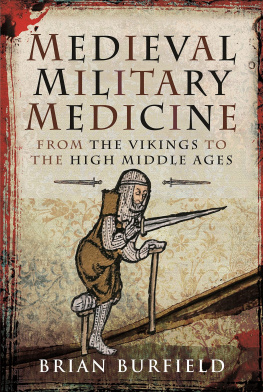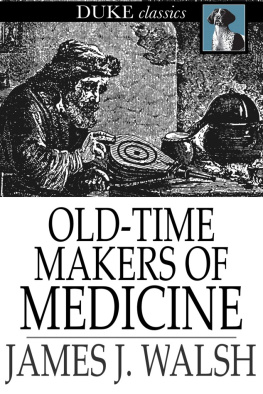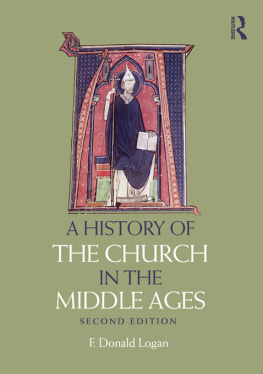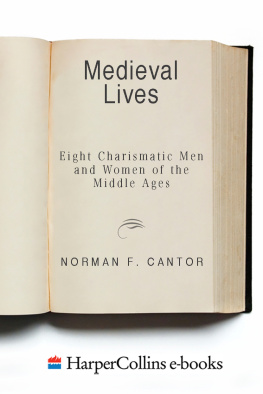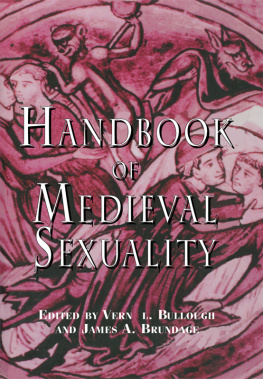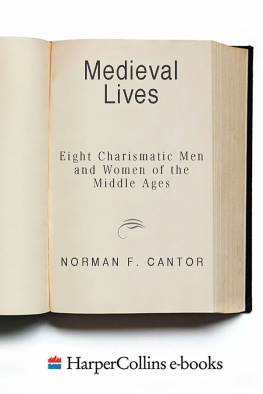Brian Burfield - Medieval Military Medicine: From the Vikings to the High Middle Ages
Here you can read online Brian Burfield - Medieval Military Medicine: From the Vikings to the High Middle Ages full text of the book (entire story) in english for free. Download pdf and epub, get meaning, cover and reviews about this ebook. year: 2022, publisher: Pen and Sword Military, genre: Religion. Description of the work, (preface) as well as reviews are available. Best literature library LitArk.com created for fans of good reading and offers a wide selection of genres:
Romance novel
Science fiction
Adventure
Detective
Science
History
Home and family
Prose
Art
Politics
Computer
Non-fiction
Religion
Business
Children
Humor
Choose a favorite category and find really read worthwhile books. Enjoy immersion in the world of imagination, feel the emotions of the characters or learn something new for yourself, make an fascinating discovery.
- Book:Medieval Military Medicine: From the Vikings to the High Middle Ages
- Author:
- Publisher:Pen and Sword Military
- Genre:
- Year:2022
- Rating:4 / 5
- Favourites:Add to favourites
- Your mark:
- 80
- 1
- 2
- 3
- 4
- 5
Medieval Military Medicine: From the Vikings to the High Middle Ages: summary, description and annotation
We offer to read an annotation, description, summary or preface (depends on what the author of the book "Medieval Military Medicine: From the Vikings to the High Middle Ages" wrote himself). If you haven't found the necessary information about the book — write in the comments, we will try to find it.
Brian Burfield: author's other books
Who wrote Medieval Military Medicine: From the Vikings to the High Middle Ages? Find out the surname, the name of the author of the book and a list of all author's works by series.
Medieval Military Medicine: From the Vikings to the High Middle Ages — read online for free the complete book (whole text) full work
Below is the text of the book, divided by pages. System saving the place of the last page read, allows you to conveniently read the book "Medieval Military Medicine: From the Vikings to the High Middle Ages" online for free, without having to search again every time where you left off. Put a bookmark, and you can go to the page where you finished reading at any time.
Font size:
Interval:
Bookmark:
Front cover: Knight with a missing leg using a crutch and pointing his sword. Last quarter of the thirteenth century. (With the kind permission of General Collection, Beinecke Rare Book and Manuscript Library, Yale University MS 229 (Lancelot Prose Cycle), 257v); Back cover: Lancelot and the wounded knight in a litter, carried between two horses. Last quarter of the thirteenth century. (With the kind permission of the General Collection, Beinecke Rare Book & Manuscript Library, Yale University, MS 229 (Lancelot Prose Cycle), 100v); Inside flap: Dominican doctor examining a patients urine. (With the kind permission of Kislak Center for Special Collections, Rare Books and Manuscripts, University of Pennsylvania, LJS 24, f. 121v)
Medieval Military
Medicine
From the Vikings to the
High Middle Ages
Brian Burfield

First published in Great Britain in 2022 by
Pen & Sword Military
An imprint of
Pen & Sword Books Ltd
Yorkshire Philadelphia
Copyright Brian Burfield 2022
ISBN 978 1 52675 474 5
eISBN 978 1 52675 475 2
The right of Brian Burfield to be identified as Author of this work has been asserted by him in accordance with the Copyright, Designs and Patents Act 1988.
A CIP catalogue record for this book is available from the British Library.
All rights reserved. No part of this book may be reproduced or transmitted in any form or by any means, electronic or mechanical including photocopying, recording or by any information storage and retrieval system, without permission from the Publisher in writing.
Pen & Sword Books Limited incorporates the imprints of Atlas, Archaeology, Aviation, Discovery, Family History, Fiction, History, Maritime, Military, Military Classics, Politics, Select, Transport, True Crime, Air World, Frontline Publishing, Leo Cooper, Remember When, Seaforth Publishing, The Praetorian Press, Wharncliffe Local History, Wharncliffe Transport, Wharncliffe True Crime and White Owl.
For a complete list of Pen & Sword titles please contact
PEN & SWORD BOOKS LIMITED
47 Church Street, Barnsley, South Yorkshire, S70 2AS, England
E-mail: enquiries@pen-and-sword.co.uk
Website: www.pen-and-sword.co.uk
Or
PEN AND SWORD BOOKS
1950 Lawrence Rd, Havertown, PA 19083, USA
E-mail: Uspen-and-sword@casematepublishers.com
Website: www.penandswordbooks.com
For Catarina
Dear God, the standards of the knights
hovered like birds round your enemies!
The spears punctuated what the swords wrote;
the dust of battle was the sand that dried
the writing; and blood perfumed it.
The Battle by Ben Said Al-Magribi (121474), translated by Lysander Kemp
The strange eloquence of this thirteenth-century poem called The Battle hides so much of the brutality and violence of war in the Middle Ages. The turbulence and grim reality of the battlefield are there but buried just beneath the calm of the writers five short lines and oddly seductive style. Savagery, wounds, filth, disease and psychological trauma are all waiting to be uncovered by pulling at the threads of this verse, words like spears and blood.
This book aspires to do just that, pick away at these strands to find the terror felt by those medieval warriors caught in the middle of the fighting crying Dear God and unearth the ghastly injuries caused by the arrows and axes of battle. Attached to the swords of those that wielded them are the casualties who were left disabled and disfigured by their wounds. Dysentery and infections are among the invisible enemies, which were hidden in the dust, regularly causing more harm than the wars themselves. The psychological trauma of combat is slightly more difficult to find, but it is there in what the nightmares and suicides of the knights and soldiers wrote. Significant for this study are those who hovered close to the victims of war, treating, comforting and safeguarding them, they too are secreted right below the surface of this poems few words.
It gives me such pleasure to be able to acknowledge my gratitude to so many people and institutions for their guidance, knowledge and assistance in making this book a reality. To begin, this project is in part the natural collaboration of influences in my life made up of my Fathers love for history and my Mothers years spent in the medical field. Both have supported me so strongly through so much and I could never say a Thank You large enough to either of them for all their encouragement, inspiration and love.
There have been many others who have impacted me along the way, the researchers, writers and translators of history, medicine and disability, whose books and papers have sparked such curiosity in me to understand more about these subjects, especially as they relate to the soldiers of the Middle Ages. I am so thankful for their work. The British Library, The Wellcome Library, The National Archives at Kew and St Barts Hospital, London have all been enormous resources throughout the process of compiling this study. The librarians and experts at these facilities have been so generous with their time and knowledge and I am forever grateful. These places and those who work there ask so little in return for the tremendous benefit they provide for so many.
There have indeed been others without whom this volume simply would not have been achievable. I could never adequately express my appreciation to D. Goldring who spent many hours reading most of the early drafts and many of the later versions, providing frank and valuable feedback and helping to steer the text in a much more positive and readable direction. Maureen Lee and Tyler Mort both read some of the early drafts and provided useful and important notes on the material. I am forever grateful to both. There is a large group of others, especially Steph, Ruth, Steve, Andrew, Alison, Emma-Rae, Grace, Lauren, Harri, Norm, Kelly, Quinn and Emma to whom I owe so much. Quinn and Emma, thank you for all the equine information. Thanks also to Alex for the laptops and to those others who have been so helpful and supportive along the way.
Pen & Sword Books, particularly commissioning editor Rupert Harding, have been very understanding and patient during the time of COVID-19 when this book was written, and I greatly appreciate all of their help. Alison Flowers, the copy editor on this project, did a tremendous amount of meticulous editing work to prepare this text for publication and I am so thankful for her help.
Without question my biggest debt of gratitude belongs to Catarina who has supported me in this project from its conception. Her incredible inspiration, imagination, encouragement and love have enabled me to overcome so much to write this book. You have all my love and appreciation.
There you would have seen so many armed knights fall, their good shields split apart and their sides opened up, some had broken legs and severed arms, others had their chests opened up, helmets were broken and heads were split apart, flesh was torn and buttocks were sliced away, blood had been spilled everywhere; and the men were either busy fighting or attempting to remove the wounded from the field of battle.
The epigraph above, from the thirteenth-century poem known as La chanson de la croisade contre les Albigeois, or The Song of the Crusade Against the Albigensians, relates so much about the kinds of wounds a soldier of the Middle Ages might have expected to see or even worse experience on the battlefield. Thankfully, the hideous soundtrack of shouts, screams and cries belonging to the wounded and those soon to expire cannot be heard and the sickening stench of sweat, blood, flesh and faeces cannot be sensed, but still the violence and horror are made abundantly clear as they are throughout this poem. This savage campaign, known as the Albigensian Crusade, took place in Southern France nearer to the end of the 500-year period covered by this book, but the brutality of war had changed little since the ninth century when Scandinavian warriors began to terrorize much of Europe. Axes and swords sliced through unprotected flesh with gruesome ease, arrows and spears were made to puncture both armour and the wearer and even more sinister weapons caused severe burns and crush injuries. Wounds like these that damaged soldiers of Northern and Western Europe between the ninth and thirteenth centuries are indeed the focus of this study, but they are just a portion of this story with disease, disability, disfigurement, damaged minds and the practitioners of medicine all playing their parts in this awful reality.
Font size:
Interval:
Bookmark:
Similar books «Medieval Military Medicine: From the Vikings to the High Middle Ages»
Look at similar books to Medieval Military Medicine: From the Vikings to the High Middle Ages. We have selected literature similar in name and meaning in the hope of providing readers with more options to find new, interesting, not yet read works.
Discussion, reviews of the book Medieval Military Medicine: From the Vikings to the High Middle Ages and just readers' own opinions. Leave your comments, write what you think about the work, its meaning or the main characters. Specify what exactly you liked and what you didn't like, and why you think so.

